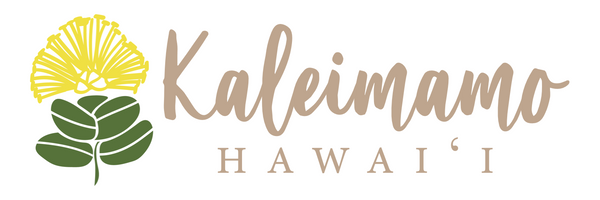Ulūlu
Ulūlu refers to all things growing, increasing and spreading. The ʻulu tree, or breadfruit, is a symbol of growth and has been a staple for Hawaiians for nearly a thousand years. ʻUlu fruits are eaten, wood used for homes and canoes, bark made into cloth, and sap used for medicine and waterproofing. ʻUlu can live for a century and produce hundreds of pounds of fruit annually. When a child is born, an ʻulu tree is often planted for a lifetime of abundance. E ulu kākou ē!

ʻUlu was brought to Hawaiʻi by early Polynesian voyagers for its incredible versatility. There are also several moʻolelo (stories) telling of the origins of ʻulu in Hawaiʻi. One mythical account tells of Kū, the Hawaiian god of farming and fishing (among other things), transforming himself into an ʻulu tree to sustain his family during a time of severe drought and famine.


Today, we primarily use ʻulu for food. It has a variety of textures and flavors depending on maturity, from firm and savory like a potato, to soft and sweet like a banana. Rich in nutrients, ʻulu can be cooked in a variety of creative recipes. My personal favorite though is simply steamed ʻulu, cut into pieces, and mixed into my poi (ʻulu chips is a close second). Fruit can also be processed and preserved to extend its shelf life.
ʻUlu is also a wonderfully sustainable and environmentally friendly crop. Great in an orchard or agroforest, ʻulu grow large to sequester carbon, are heat and drought tolerant, reduce the need for weed control, and help stabilize soils. While ‘ulu played an important role in traditional Hawaiian agriculture and diet, over the past century, it and many other traditional Hawaiian crops were replaced in Hawaiʻi by monoculture agriculture targeting commodities for export. Without our traditional crops to sustain Hawaiʻi’s people, imported, often highly-processed foods have become the norm, negatively impacting Hawaiians’ physical health and our local economy.

Thankfully, with the revitalization of Hawaiian cultural knowledge and practice over the past decades, ʻulu is making a comeback with many producers and chefs now rediscovering its benefits. Entities like the Hawai‘i ‘Ulu Cooperative are working to share knowledge about ʻulu and making it easier for Hawaiʻi’s residents to find, cook, and enjoy year-round. To learn more about ʻulu and where you can find it, check out their website: https://eatbreadfruit.com.
This print was created by our dear friends at Onepaʻa Hawaiʻi. You can check out all their goodies in this print here: https://onepaahawaii.com/collections/ululu
